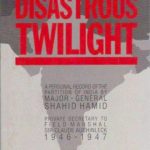By Saleem Akhtar Malik
The concept of a Monroe Doctrine for South Asia does not imply that the US has the authority to act in the region. On the eve of independence, Quaid e Azam proposed the notion. He mentioned a local Monroe Doctrine in response to a foreign journalist, which would seal the Sub-Continent against international influence. The Monroe Doctrine was a U.S foreign policy position that opposed European colonialism in the Western Hemisphere (North and South America and the surrounding waters). It held that any intervention in the political affairs of the Americas by foreign powers was a potentially hostile act against the U.S. The doctrine was central to U.S. foreign policy for much of the 19th and early 20th centuries. Even in the 21st Century, the U.S does not tolerate regimes in the Western Hemisphere that try to follow independent foreign policies. We have the examples of Cuba, Chile, Nicaragua, and Venezuela which were punished by the US for daring to exert their independence in their domestic and foreign policies. Talking about a Monroe Doctrine for South Asia does not imply extending the US right to intervene in the South Asian region. The idea was first mooted by Quaid e Azam on the eve of independence. While replying to a foreign correspondent, he talked about a local Monroe Doctrine which would seal the Sub-Continent against foreign interference. What the Quaid had in mind was an understanding between India and Pakistan, the two largest South Asian countries, that any foreign intervention in the internal affairs and foreign policy matters of the South Asian states would not be allowed, and construed as an act of aggression.
Quaid’s wish could not materialize because the Congress leadership had nurtured different dreams
Congress’ mindset can be gleaned from a letter written by Jawaharlal Nehru to Brigadier Kodandera MadappaCariappa (later General Cariappa, independent India’s first army chief). Cariappa was a member of the Reconstitution Committee formed by the British to oversee the division of armies between India and Pakistan. Nehru wrote: “Let things take shape for a while. But of one thing I am convinced, that ultimately there will be a united and strong India. We will have to go through the valley of shadows before we reach the sunlit mountain top”.
Referring to Pakistan, this same Jawaharlal Nehru had once remarked to Braj Kumar Nehru (Then India’s ambassador to the U.S): “let us see for how long they last”.
Almost seventy years after the British left, the Sub-Continent remains the world’s most militarized region and a nuclear flashpoint. Given the current state of affairs, it seems almost impossible that a regional understanding, like the one envisioned by Jinnah, will ever come to fruition. The major impediment to normal relations between India and Pakistan, and the cause of three major wars between them, is the Kashmir logjam.
To make the matters worse, the Indian Government, in a presidential decree issued on 5 August 2019, revoked Articles 370 and 35A of India’s constitution that guaranteed special rights to the Muslim-majority state, including its right to its constitution and decision-making process for all matters except defence, foreign affairs, and communications. In the follow-up to the move, India sent thousands of additional troops to the region, imposing a curfew on parts of the besieged state, shutting down telecommunications, and arresting political leaders.
Almost three years after the abrogation of Article 370 and Article 35 A, Indian Held Kashmir remains a huge jail reminiscent of the Israeli-occupied Gaza Strip and the West Bank of River Jordan. Revoking IHK’s special status is a reflection of the mass paranoia and fearModi and his cohorts are suffering. Far from finishing the Kashmir dispute, it has brought the dispute into the International limelight.
What is Modi up to?
He wants to fragment the disputed state and annex each shard with a contiguous Indian state (Province, as we call them in Pakistan). This, he thinks, will scatter the Kashmiris to the four winds, break their cohesive national identity, and render them unable to unify for a common cause and struggle. This is easier said than done. The Israelis, for the last half a century, are working on a similar plan. They have splintered the West Bank, dotted it with Jewish settlements, and encircled the Palestinian cities and villages, reducing them into several Bantustans (A term used by the white rulers in apartheid South Africa for the Black African towns surrounded from all sides by white settlements). Israelis have failed to achieve their objective of cleansing the West Bank from Palestinians. So will Modi.
Is war an option to break the logjam?
Both India and Pakistan lack the decisive conventional punch to knock out the other. With both the belligerents being nuclear powers, a limited war under a nuclear overhang is possible, that too only after the enemy is caused enough attrition to stop him from responding further. According to investigative journalist Steve Coll’s 2009 article in the New Yorker, India, and Pakistan, after intensive track II diplomacy, had very nearly reached an agreement that would have demilitarized Jammu & Kashmir. The plan called for the creation of an autonomous region in which residents could move freely and conduct trade on both sides of the Line of Control. Over time, the line of Control would become irrelevant, and declining violence would allow a gradual withdrawal of tens of thousands of troops that now face one another across the region’s mountain passes. The plan called for the creation of an autonomous region in which residents could move freely and conduct trade on both sides of the Line of Control. Over time, the line of Control would become irrelevant, and declining violence would allow a gradual withdrawal of tens of thousands of troops that now face one another across the region’s mountain passes. The stillborn plan, the result of back door diplomacy between India and Pakistan, was also known as the Musharraf- Manmohan Formula. It was a win-win solution to the Kashmir problem. Why did politicians on both sides of the LoC shove the Musharraf Manmohan formula under the rug? Saleem Akhtar Malik is a Pakistan Army veteran who writes on national and international affairs, defense, military history, and military technology. The views expressed in this article are the author’s own and do not necessarily reflect the editorial policy of Global Village Space.







